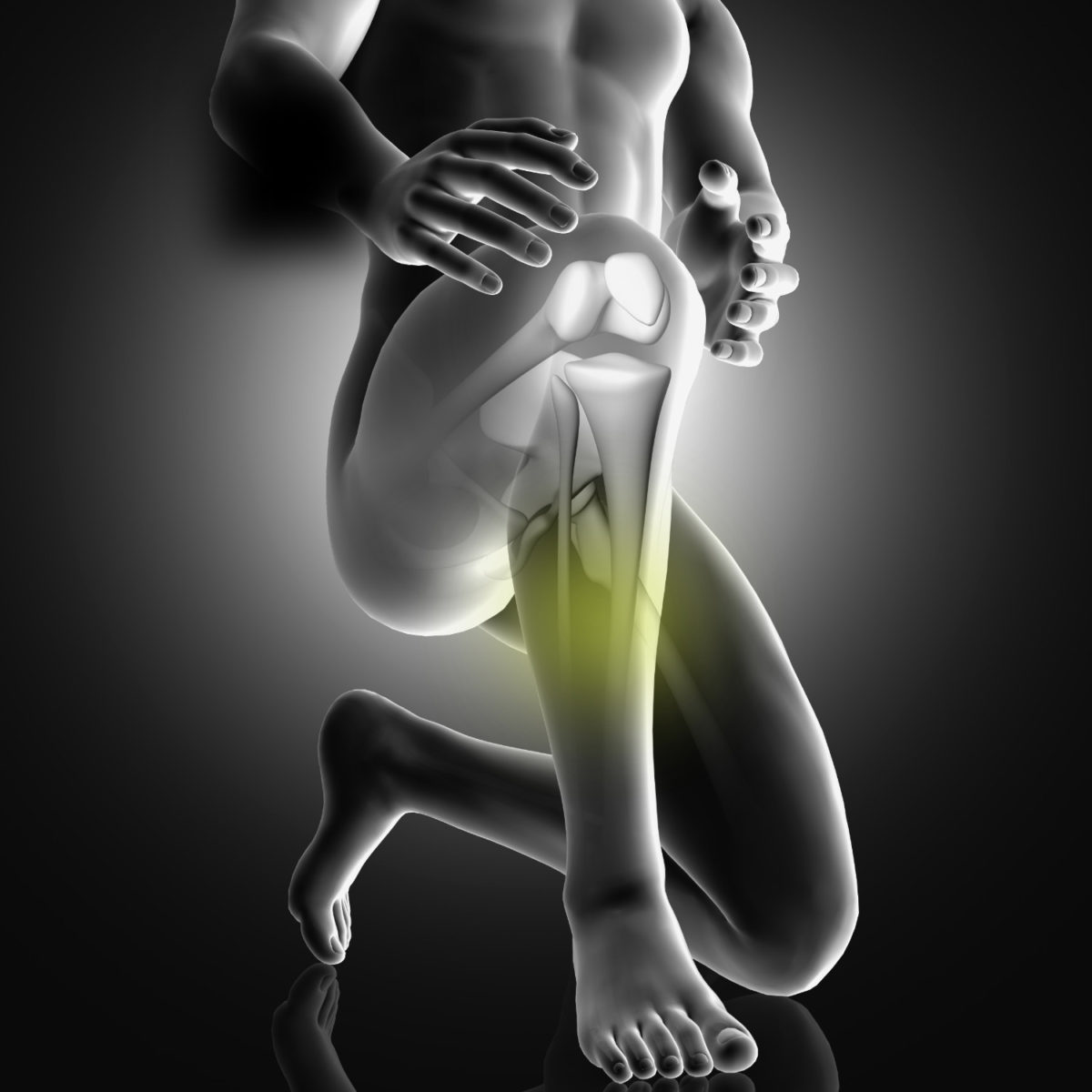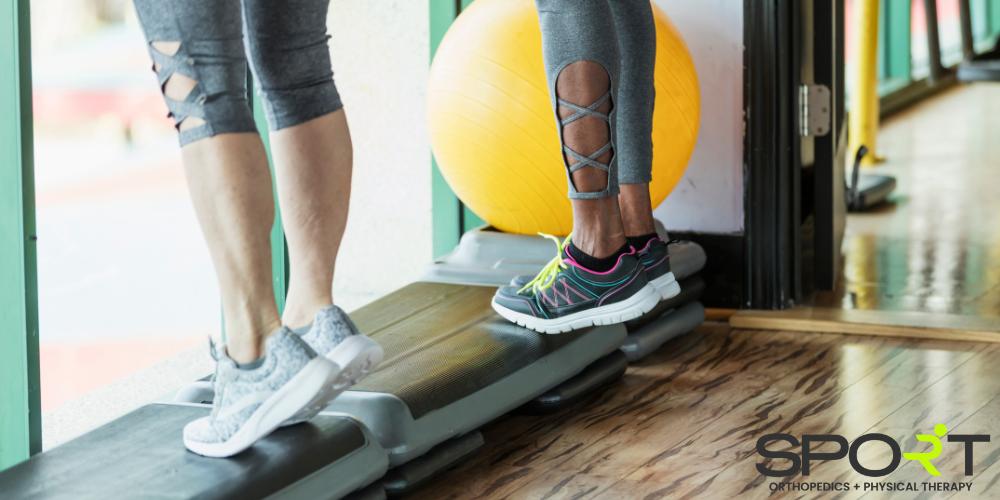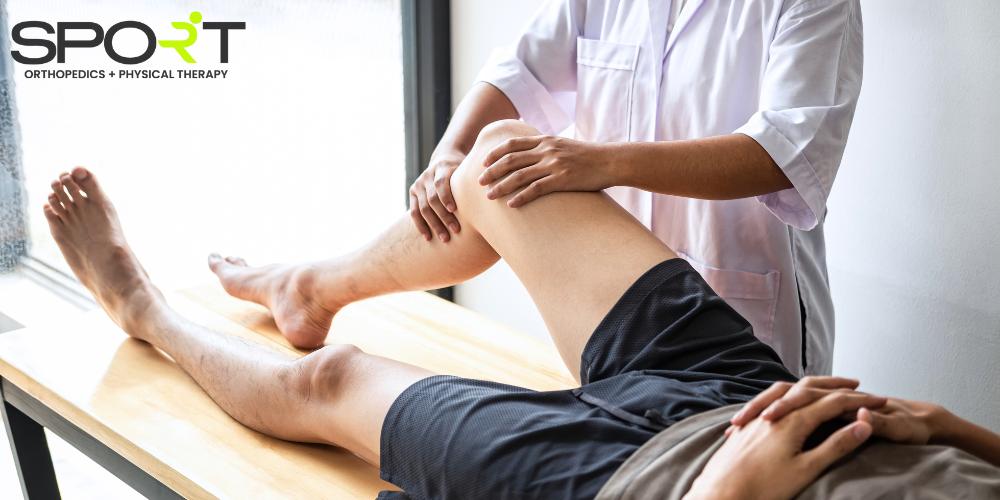Dallas Knock Knee Treatment for Adults
Shin Splints Treatment in Dallas, Frisco, Prosper, and Wylie, TX
Shin Splints Therapies, Shin Splint Surgery, Medial Tibial Stress Syndrome Treatment
Shin Splints Doctor in Dallas, TX
Anyone who is familiar with running is probably also familiar with shin splints. Further, anyone who has experienced shin splints before knows just how much of a nuisance they can be. Shin splints, also known as medial tibial stress syndrome, are a relatively common exercise-related condition. It can result in pain along the shin bones, which can seriously limit someone’s ability to exercise or even walk comfortably.
Our board-certified best orthopedic surgeons in Dallas see hundreds of patients with shin splints, both children and adults. Our orthopedic surgeons, along with the rest of our SPORT doctors and physical therapists, have the skills and experience needed to correct and prevent shin splints of any severity. To schedule an appointment with one of our skilled professionals, please call our office at 469-200-2832 today.
What Are Shin Splints (Medial Tibial Stress Syndrome)?
Shin splints, or medial tibial stress syndrome, refers to a condition that affects a person’s tibia bone, or what many people refer to as a shinbone. It is the result of inflammation of the muscles, tendons, and bone surrounding the tibia. Shin splints typically develop from regular running or jumping, but can result from virtually any kind of physical activity.
Shin splint pain occurs along the outside, inner edge of the tibia where the muscles attach to the bone. In serious cases of medial tibial stress syndrome, there may also be slight swelling around the area.
Posterior Shin Splints
Unlike anterior shin splints, which affect the front part of the shin, posterior shin splints involve the inner or posterior part. This condition often occurs due to repetitive stress on the shin bone and surrounding tissues, such as muscles and tendons, commonly associated with activities like running, jumping, or high-impact sports.

Shin Splints Symptoms
Shin splint symptoms are usually mild, including indications such as the following.
- Shin pain
- Tenderness
- Mild swelling along the shinbone
Depending on the classification of the injury, shin splints can be felt on either the inner or outer side of the shin. In many cases, the pain starts out mild and intensifies over time.
What Do Shin Splints Feel Like?
Those who experience shin splints describe the pain as being either sharp and razor-like or dull and throbbing. The area may be aggravated by massaging or even just touching and can occur both during and after physical activity.

Shin Splints vs Stress Fracture
Shin splints and stress fractures are both lower leg injuries, but they differ in their nature and causes. A stress fracture is an actual small crack or break in the bone, often caused by repetitive impact and excessive force. Shin splints involve inflammation of the muscles, tendons, and periosteum (the tissue covering the bone) along the shinbone.
While shin splints produce diffuse pain along the shin and tenderness to touch, stress fractures usually lead to localized, sharper pain at a specific spot on the bone. Stress fractures may require more focused rest and can be diagnosed through imaging techniques like X-rays or MRI scans, whereas shin splints often improve with rest, ice, and proper rehabilitation exercises.
How Are Shin Splints Diagnosed?

Orthopedic specialists diagnose shin splints using a combination of methods. First, they will take the patient’s medical history. Then, they will perform a physical exam. In some cases, imaging studies are necessary.
During the physical examination, they may palpate the affected area to check for tenderness, swelling, or any abnormalities. Other possible causes of leg pain, such as stress fractures or compartment syndrome, may be considered and ruled out.
What Causes Shin Splints?
Typically, shin splints develop by overworking the lower leg muscles and bone tissue in the leg through repetitive activity. Runners, dancers, and military recruits are some groups who are most likely prone to developing shin splints.
Medial tibial stress syndrome also often occurs as a result of a change in physical activity. For example, let’s say a person normally goes for a run 2-3 days out of the week. They decide to increase their activity level to 4-5 days a week. This, along with any other sudden changes in the duration or intensity of exercise, may cause shin splints to develop.
Other risk factors that contribute to shin splints include having flat feet, abnormally rigid arches, or exercising with worn-out or improper footwear.
How to Prevent Shin Splints

There are a few steps you can take to help prevent the development of medial tibial stress syndrome, or shin splints. The most obvious way to prevent it is by slowly building up your fitness level. Because shin splints often result from a sudden increase or adjustment in activity levels, a slower buildup to a more intense routine can be beneficial in preventing them. Try to increase the duration, frequency, and/or intensity ever so gradually.
Another significant factor that contributes to the development of shin splints is your footwear. Old, worn-out shoes or shoes unfit for running can be a direct cause of shin splints. Make sure you are wearing shoes that are designed specifically for whatever sport or activity you are participating in. In addition, make sure they are made to fit your foot type (i.e., flat foot, high-arch, etc.).
Barefoot running may also help to prevent or even resolve shin splints. Recent research has shown that running barefoot can disperse the impact among leg muscles so that no muscle group becomes too overloaded with stress. Like with most workout regimens, you should begin barefoot running gradually and build up over time. Also, be wary of the terrain on which you run, as being barefoot poses a greater risk for injuries like cuts or bruises.
Finally, cross-training may be beneficial in preventing shin splints. Try alternating lower-impact sports (swimming, cycling, rowing) with higher-impact sports (running, soccer, jumping hurdles).
Shin Splint Stretches
Doing stretches for shin splints is an easy way for patients to prevent shin splints and manage their symptoms. Below, we outline several shin splints stretches you can do at home.
- Toe-drag stretch: Start by standing up straight and bend both knees slightly. Keep one foot on the ground while curling the other foot forward. The toes of the curled foot should press against the floor. Hold this position for 15-30 seconds, then switch sides and repeat.
- Kneeling stretch: On a mat, kneel on one leg with your buttocks directly over your heel. Try to keep your feet flat on the floor as you hold this lunge position for 15-30 seconds. Repeat on the other side.
- Seated stretch: Sit down in a comfortable, level chair. Drop one knee toward the ground and curl your toes under. Lean forward while keeping your toes curled. Hold this position for 15-30 seconds, then repeat on the other side.
- Heel walk stretch: Before exercising, walk on your heels for a few minutes to stretch your shins and calves.
- Toe walk stretch: Before exercising, walk on your toes for a few minutes. Couple this with the heel walk stretch for the best effect.
Shin Splints Exercises
When dealing with or trying to prevent shin splints, it’s important to include stretching in your exercise regimen. It’s also important to diversify your regimen with balance exercises and stretches. We recommend the following exercises for shin splints.
- Single leg bridge: This is one of the most effective exercises for shin splints. Start by lying flat on your back with your arms by your sides. Bend your knees and place the bottoms of your feet on the ground. Pressing your shoulders and heels into the ground, raise your hips toward the ceiling. Your knees should be at a 90-degree angle with the ground. Raise one leg into the air, keeping it straight and keeping your hips high. Hold this position for 10 seconds, then swap sides.
- Elevated calf raises: Stand on a step while resting your hands on another surface to keep your balance. Stand so that only your toes and the balls of your feet rest on the step. Point your toes straight ahead, then use the balls of your feet to lift your heels into the air. At the top of the lift, count to two. Then, count to three as you lower your heels to either be parallel with the step or slightly lower.
- Seated calf stretch: Sit on the floor with your knees straight. Using a towel, rope, or resistance band, loop it around your foot and gently pull until it is fully flexed. Hold this position for 30 seconds, then repeat on the other side.
Best Running Shoes for Shin Splints
When dealing with shin splints, it’s crucial to have the proper footwear. It can be difficult to know exactly which shoe is best for your feet, but there are a few features that you should look out for. The best shoes for shin splints should have shock-absorbing insoles, arch support, and cushioned midsoles.
How to Get Rid of Shin Splints

The vast majority of shin splint cases are healed nonsurgically. There are some rare, extreme cases where typical treatment methods do not provide relief and surgery may be needed to repair the damage. However, this is very unlikely, as shin splints can almost always be treated by nonsurgical means.
Here are some common ways shin splints are treated:
- Ice. Applying ice packs to the affected area several times a day for 20 minutes at a time can help reduce pain and swelling.
- Compression. Wearing an elastic compression bandage over the shins can help prevent additional damage or swelling.
- Anti-inflammatory medication. Your doctor may prescribe you with medication that will help manage the pain and swelling.
- Supportive shoes. Sometimes, improper footwear can directly contribute to your medial tibial stress syndrome. Investing in shoes with proper support and cushioning can help reduce the strain placed on your tibia.
- Flexibility exercises. Flexing and strengthening the muscles of the leg may help in relieving some of the shin splint pain.
- Shoe inserts. People with abnormally flat feet or high arches tend to be prone to shin splints. Shoe inserts, whether they are custom-made or store bought, can help align and stabilize the foot while relieving some of the pressure that builds up while exercising.
- Rest. Perhaps the simplest thing you can do to treat shin splints is rest. Since they are an overuse injury, shin splints will heal on their own with the proper amount of rest and recovery time. Generally, a few weeks is enough of a break for your shin splints to heal.
Before you return to your normal exercise routine, you should be pain-free for at least two weeks so as to prevent any more stress to the shin bones. It is also advisable to return to a lower intensity or lower impact sport than before and gradually work your way back up.
Shin Splint Surgery
While it is possible to have shin splints treated with surgery, this is extremely rare. Most cases of shin splints resolve on their own or through self-care methods within a few days or weeks. In severe cases, symptoms can last for three months or longer. This is generally the only situation in which an orthopedic doctor might recommend surgery for shin splints.
Can a Physical Therapist Help Shin Splints?
Physical therapists can be very beneficial when it comes to treating shin splints. In addition to stretching and exercising your legs, our licensed Texas physical therapists may use a variety of other techniques to help in the recovery process. Often, this entails soft tissue massages or applying Kinesio Tape to provide arch support.
Astym (a technique that utilizes unique tools to promote healing and tissue regeneration) and dry needling (a technique used to release or activate trigger points to relieve pain or improve range of motion) may also be used as a form of treatment.
In addition to onsite therapy, our SPORT physical therapists will also prescribe a home exercise program designed to strengthen muscles and prevent shin splints from reoccurring. Overall, physical therapy can significantly aid in the quick recovery and prevention of shin splints.
Shin Splints Massage
Sometimes, soft tissue massages can ease the pain of shin splints. Sports massages and myofascial releases can help reduce muscle tension, increase blood flow, and aid the healing process. Speak with an experienced Dallas physical therapist about massages for shin splints.
How to Tape for Shin Splints

Using Kinesio Tape can help reduce stress and prevent shin splints. Contact our office to schedule an appointment with one of our skilled physical therapists. They can demonstrate the best taping techniques for shin splint prevention.
How Long Do Shin Splints Last?
The symptoms of shin splints can last anywhere from a few days to a few weeks, generally. It depends on the severity of the case. In very rare cases, symptoms can last a few months or longer. If your symptoms persist beyond a couple of weeks, schedule an appointment with an orthopedic doctor as soon as possible.
Call SPORT Orthopedics + Physical Therapy for Dallas Shin Splint Treatment Options
At SPORT, we identify the source of your pain and use our top-of-the-line therapeutic techniques to restore your range of motion along with your quality of life. Depending on your specific condition and its severity, we develop personally curated treatment plans meant just for you. These plans may include physical therapy, massage therapy, medication, shots, or even surgery.
If you or someone you know is suffering from shin splints, get in touch with the experts at SPORT Orthopedics + Physical Therapy as soon as possible to ensure you’re back in the game in no time. You can give us a call at (469) 200-2832 to schedule a consultation or feel free to fill out our online intake form.


